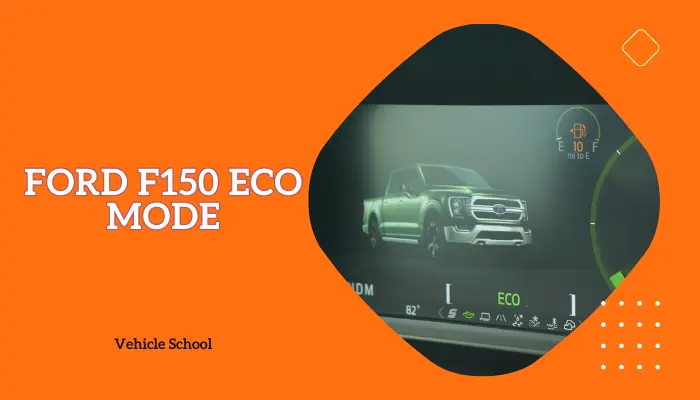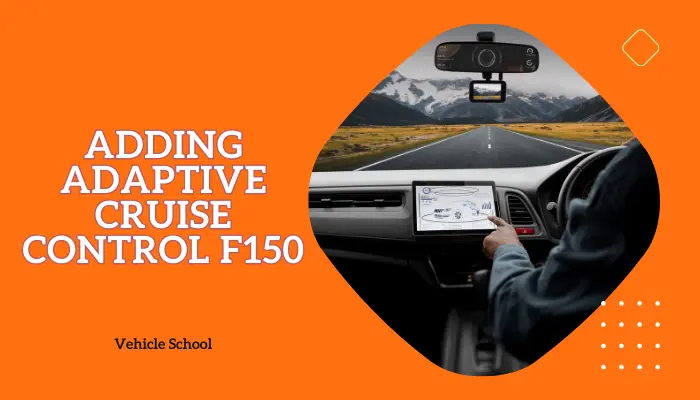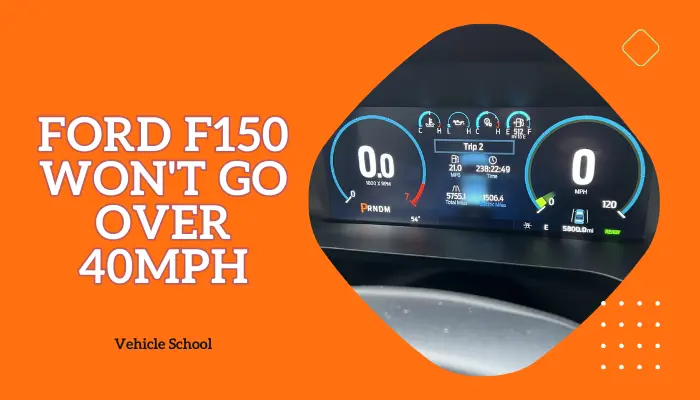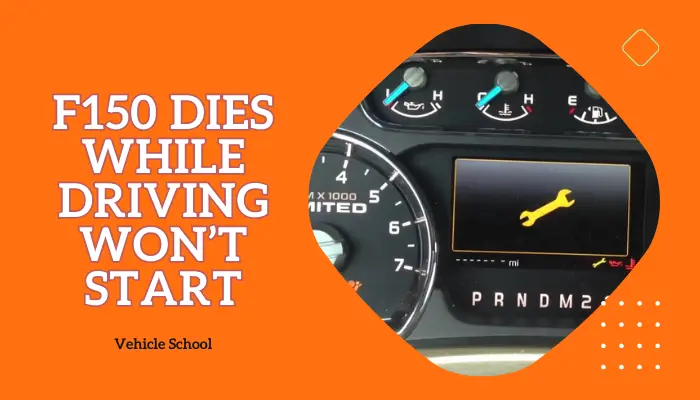Imagine cruising down a steep slope in your Ford F150 and the dashboard displays the “hill descent control fault” warning. It’s enough to make any driver nervous.
The hill descent control fault alert means there’s a fault in the HDC system, which maintains a constant speed (2 mph to 20 mph) while moving down from a steep hill with the help brake control system.
But don’t worry, I’m here to guide you through that dashboard message and get to the bottom of what’s causing the issue. I’ll share solutions gained from my own experiences in this article. So, keep reading to clear that fault.
What Causes Hill Descent Control Fault Warning In Your F150?
The hill descent control fault can result from throttle body gunk, bad steering rack or brake pedal sensors, or even a dead battery. When the Ford F150 flashes an “HDC Fault” message, it means issues in the Hill Descent Control system linked to stability and traction issues.
Before getting to fixes, let’s dig deep into what went wrong in the first place.
1. Throttle Body Problem
Throttle body issues can set off Service AdvanceTrac and Hill Descent Control Fault messages.
This usually happens because gunk, leaks, and sensor misalignment mess things up.
Debris or carbon buildup in the throttle body can make the throttle valve move less smoothly, which affects airflow.
Leaks from damaged seals or gaskets let in extra air, messing with the fuel mix as well.
If the throttle position sensor isn’t lined up right, it gives the wrong readings, throwing off stability systems like AdvanceTrac and HDC, and triggering those messages.
You’ll likely also start spotting other warning lights, like the Check Engine light.
2. Faulty Steering Rack Sensor
If you’ve got a faulty steering rack sensor in your F150, you might get warnings like Service Advancetrac and HDC Fault.
The steering rack keeps your ride on track, and when its sensor goes bad it can disrupt power steering, stability, and traction control systems like Advancetrac.
The HDC system, relying on precise steering info, starts throwing warnings.
If the rack sensor is why your truck’s throwing errors, you might spot a few signs. For one, you might notice the “steering assist fault service required” message in your f150.
You can also find some related diagnostic codes showing up with FORScan like C1B00 – Steering Angle Sensor and B1304 – Electronic Power Assist Steering System.
3. Brake Pedal Sensor Issue
The brake pedal sensor (the one under your dash) tells your truck when you’re hitting the brakes.
For systems like Hill Descent Control and AdvanceTrac that depend on knowing when you’re braking, a bad brake pedal sensor causes trouble.
If this is why you’re receiving the alerts, then you might notice your cruise control behaving oddly and your F-150 displaying a “check brake system” message as well.
Even your engine might start cutting out without showing any Check Engine lights.
4. Damaged Speed Sensors / Pulled Sensor Wire
A problematic F150 ABS speed sensor in an F150, often caused by compromised wheel bearings, can trigger warning messages like “Service Advancetrac” and “HDC Fault.”
The wheel bearings, essential for smooth wheel rotation, impact the accuracy of speed sensor data.
Damaged wheel bearings can cause incorrect readings, making the electronic stability control system interpret speed sensor data as potential traction or stability problems, triggering warnings.
If this is the case you may also encounter Hill Start Assist Not Available message in your Ford F150.
5. Bad Right Front Wheel Hub
A bad right front wheel hub can cause the “Service Advancetrac” and “HDC Fault” warnings to show up. The hub being the reason is much less common but is a known thing for some F150s.
This wheel hub can go faulty due to impacts, contamination, and improper alignment. Hitting potholes or obstacles can damage the hub, affecting bearings and sensors.
Contamination, like water and dirt, can compromise lubrication. Improper alignment, from wear or incorrect installation, increases the stress on it as well, making it wear faster.
These issues collectively hinder the wheel hub’s performance, impacting data accuracy for vehicle systems and potentially causing hill descent control malfunction.
6. Dead Battery
The “Service Advancetrac” and “HDC Fault” warnings in an F150 can occur due to a dead battery. If the battery voltage drops too low, it can disrupt electrical signals, triggering the warnings.
However, this one is the least likely to be the reason; it’s a thing in older F150s. I’ve only come across a few people who had this issue fixed just by taking care of the battery.
How To Fix Hill Descent Control Fault in Ford F150?
With the causes out of the way, let me walk you through all the repairs you can try.
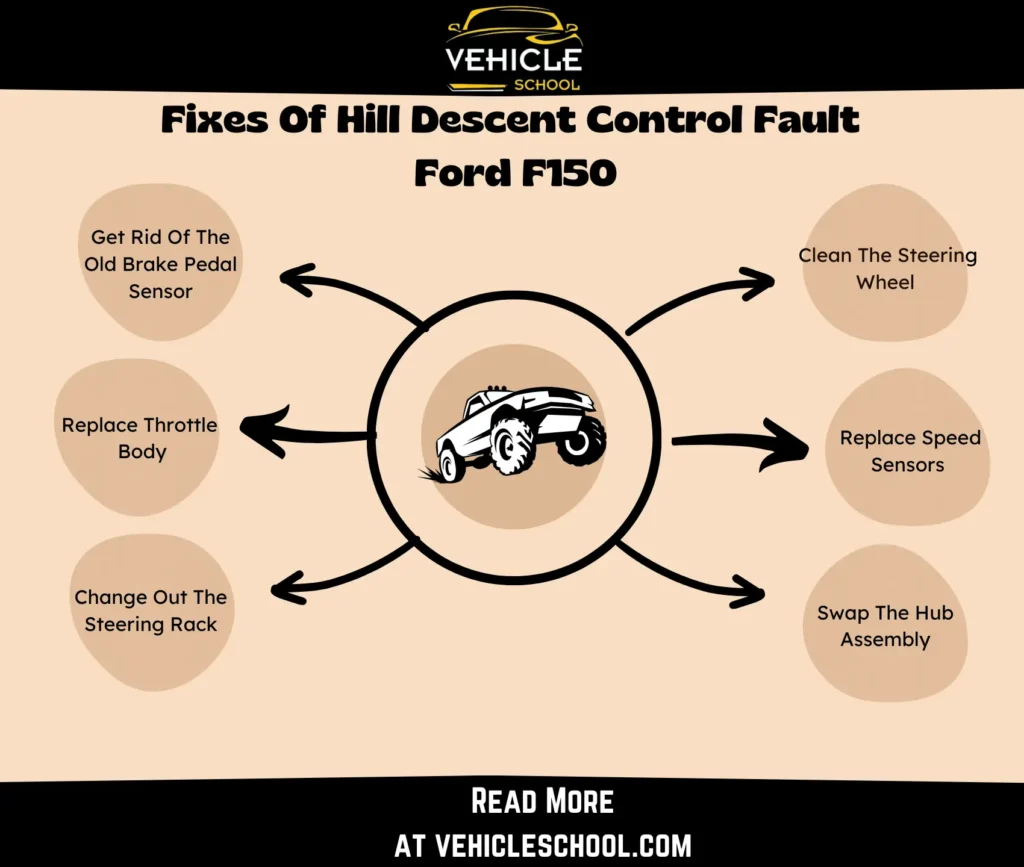
1. Clean The Steering Wheel
This is one of the cheapest fixes to the issue, so try it first.
- Wear safety gear and disconnect the battery.
- Locate the steering rack in the engine compartment.
- Identify the electrical connections on the steering rack.
- Inspect connectors for moisture or corrosion.
- Disconnect electrical connections and note positions.
- Remove moisture using compressed air or a dry cloth.
- Examine wiring and connectors for damage and repair if needed.
- Reconnect everything and the battery.
- Start the engine and check to see if the alerts are still there.
2. Replace Speed Sensors
- Lift the front of your F-150 and secure it.
- Take off the front tire to reach the ABS sensor.
- Remove the brake components: caliper, rotor, and caliper holder.
- Access the ABS sensor by removing the 8mm bolt.
- Swap out the old ABS sensor with the new one using a 5mm Allen wrench.
- Follow the path of the old sensor cable, disconnecting and connecting the new cable.
- Plug in the new ABS sensor near the air filter housing.
- Reassemble the brake components: caliper holder, rotor, caliper, and brake pads.
- Apply thread locker to the caliper holder bolts and tighten to specifications.
- Repeat the process for the other side if necessary.
- Use FORSCAN software to clear ABS codes.
- Test drive to ensure the ABS works correctly if the warnings are gone.
3. Swap The Hub Assembly
- Lift the truck and turn the steering wheel.
- Take the wheel off to access the hub.
- Remove the brake caliper, pads, and wheel sensor.
- Loosen and remove hub assembly bolts, CV axle, and dust cap.
- Clean the spindle, apply grease, and install the new hub.
- Tighten bolts in a crisscross pattern, secure the CV axle, and replace the dust cap.
- Reattach the wheel sensor, rotor, and caliper bracket, and compress the caliper pistons.
- Install new brake pads, tighten the caliper bolts, and reinstall the wheel.
- Lower your truck and ensure everything works.
If you’re confused, you can try and follow along with this tutorial. The title is for older Fords, but I’ve used a similar process for more modern models as well.
4. Get Rid Of The Old Brake Pedal Sensor
- Locate the brake pedal sensor under your F150’s dashboard.
- Disconnect the electrical connector from the sensor.
- Use a flat screwdriver to remove any clips or screws holding the sensor in place.
- Take the old sensor out of its position.
- Install the new sensor in the same spot.
- Secure it by reattaching any clips or screws.
- Connect the electrical plug until it clicks into place.
- Ensure the sensor is firmly in position and aligns with the brake pedal.
- Test the brake pedal to confirm the new sensor’s functionality.
5. Replace Throttle Body
You’ll have to get even more hands-on for this one:
- Disconnect the battery for safety.
- Uncover and disconnect the throttle body and intake assembly.
- Remove the intake tubing, the 10mm bolt, and the clamps securing the assembly.
- Lift the assembly, disconnect wires, hoses, and the throttle body.
- Take off the two 8mm bolts holding the throttle body, then disconnect the remaining electrical connector.
- Clean off, inspect, or replace the gasket.
- Connect the new throttle body using four bolts with torque to 89 inch-pounds.
- Reconnect the electrical connector and lines.
- Slide the intake assembly back, securing it with bolts, clip, and hose.
- Attach the intake tubing again, ensuring tight clamps.
- Double-check all connections for security and air leaks.
- If warnings are gone, do a test run to check the throttle response.
Replacing the old throttle body will also fix sluggish throttle response issue and boost the overall performance of your F-150.
6. Change Out The Steering Rack
Be extra careful about this one; it’s a very complicated fix. That’s why I kept it for last.
Usually, at a mechanic, you’d have to pay over $1,500 to get it replaced. DIY-ing takes a ton of effort, too. I won’t be able to fit in the whole process here; that’d need a whole post of its own.
For now, I’ll briefly summarize what you need to do.
- Disconnect the battery.
- Remove the old rack and pinion assembly, disconnecting associated lines.
- Transfer the pressure sensor to a new pressure line.
- Install a new pressure line, rack, and pinion assembly.
- Attach tie rod ends and a return line.
- Tighten mount bracket bolts and tie rod ends.
- Perform front-end alignment.
- Double-check all connections and bolts.
- Refill the power steering fluid.
- Reconnect the battery.
- Start the vehicle, check the steering operation, and see if the warning messages remain.
- Test drive at low speed.
Here’s a video that can help you:
FAQs
How to Turn off Hill Descent Control on a Ford F150?
To turn off Hill Descent Control (HDC) on your Ford F-150, just hit the HDC button on the center console again. You’ll hear a chime, and the HDC icon on the dashboard will go off, letting you know it’s no longer in action. Once it’s off, you’re back to regular driving with full control over acceleration and braking.
How are Ford F150 Service AdvanceTrac and Hill Descent Control Fault related?
Service AdvanceTrac and Hill Descent Control Fault alerts often go hand-in-hand because both rely on the vehicle’s stability and traction control systems. When these systems encounter a glitch, it tends to trigger fault messages for both Service AdvanceTrac and hill descent control.
Does all F150 have hill descent control?
Any F150 equipped with Ford Co-Pilot 360 Technology comes with hill descent control. That includes the F150 Ford Raptor, Platinum, etc.
What is the difference between Hill Start Assist and Hill Descent Control?
Hill Start Assist and Hill Descent Control in Ford cars serve different purposes. Hill Start Assist keeps your car from rolling backward when you start on an incline, making uphill starts smoother. On the other hand, Hill Descent Control manages downhill descents, using brakes and traction control to maintain a steady speed without slipping.
Final Thoughts
You won’t be tumbling down hills just because the hill descent control fault message comes up in your F-150.
There’s still a small hole in your safety, though, because of all the parts that go wrong and cause this alert to pop up.
So, to not miss out on any convenience and to make sure you always ride safely, go ahead and give the fixes I provided a try.

